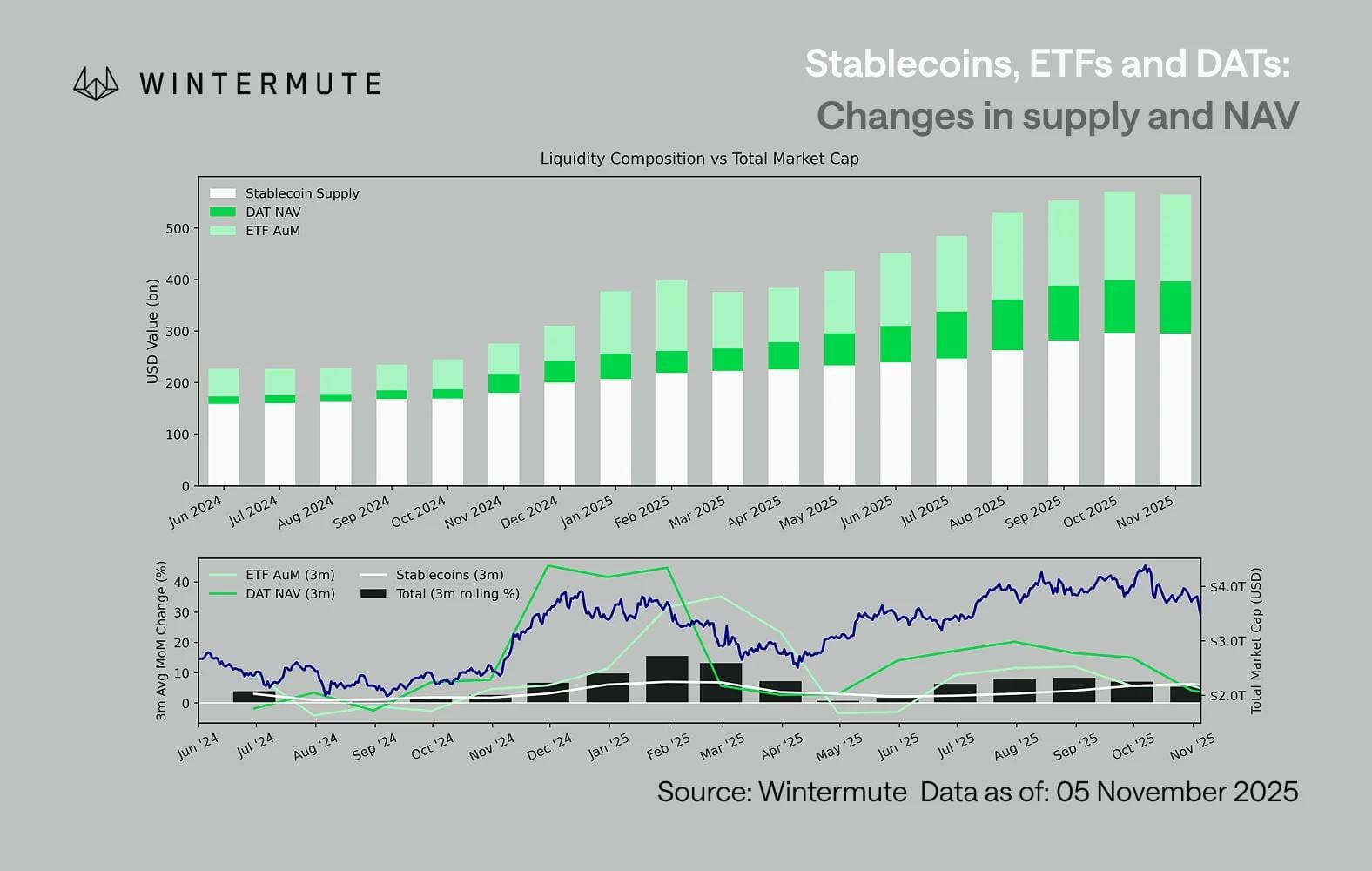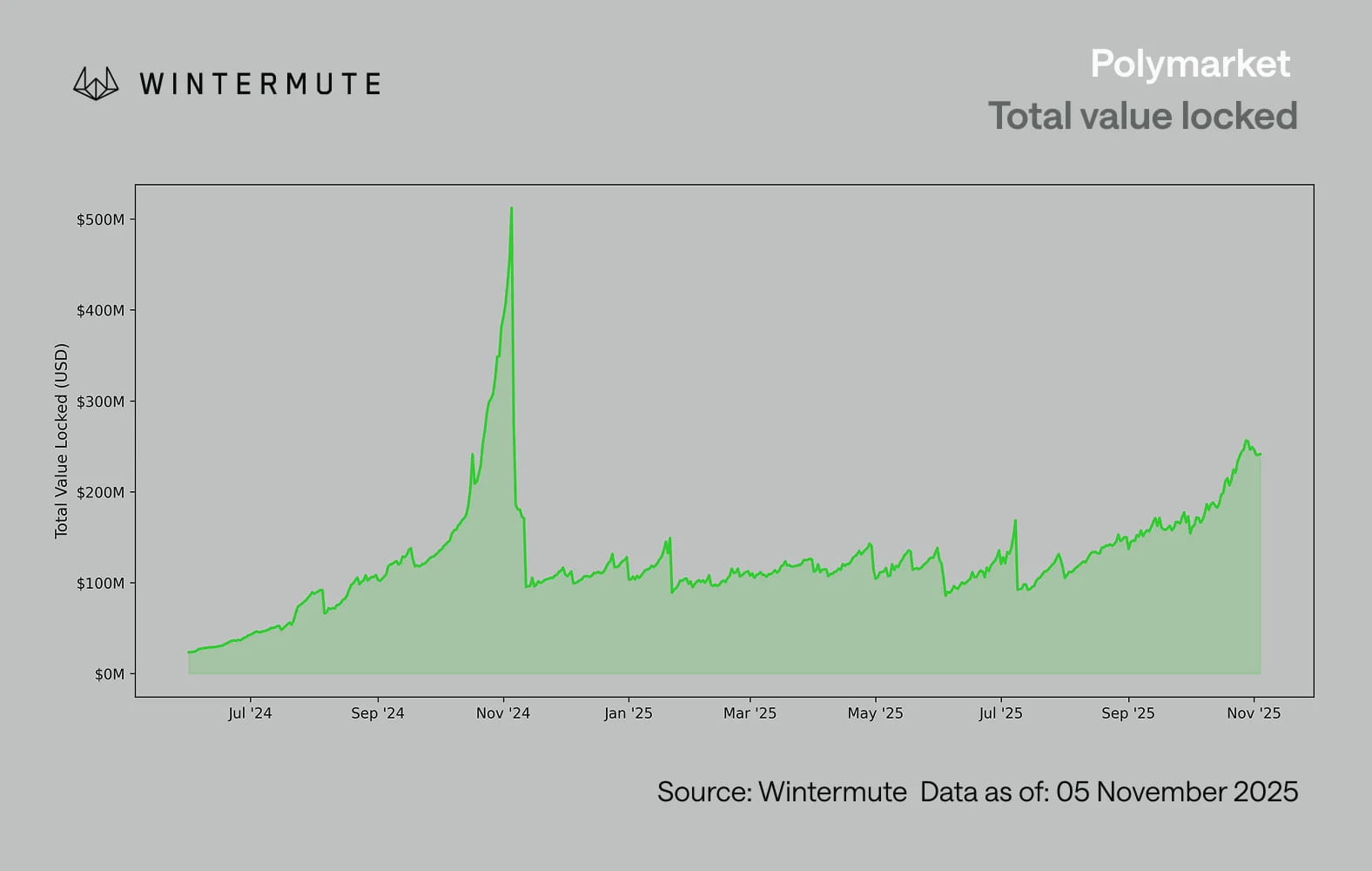Author: Jasper De Maere
Compiled by: Deep Tide TechFlow
To begin with
Liquidity drives the cryptocurrency cycle, and the inflow of funds through stablecoins, ETFs, and DATs (Digital Asset Trusts) has significantly slowed down.
Global liquidity remains strong, but the higher SOFR (Secured Overnight Financing Rate) is directing funds toward government bonds and away from the cryptocurrency market.
Cryptocurrency is currently in a self-financing stage, with capital circulating internally, waiting for new inflows of funds to return.
Liquidity determines every cryptocurrency cycle. Although technology applications may be the core driving force behind the cryptocurrency narrative in the long term, it is actually the flow of funds that drives price changes. Over the past few months, the momentum of fund inflows has weakened. In the three main channels for capital entering the cryptocurrency ecosystem—stablecoins, ETFs, and Digital Asset Treasuries (DATs)—the momentum of fund flows has diminished, putting cryptocurrency in a self-financing phase rather than an expansion phase.
Although technological applications are important drivers, liquidity is the key that drives and defines every cryptocurrency cycle. This is not just about market depth, but about the availability of funds themselves. When global money supply expands or real interest rates decline, excess liquidity inevitably seeks risk assets, and historically, cryptocurrencies have been among the biggest beneficiaries, especially during the cycle of 2021.
In previous cycles, liquidity primarily entered the digital asset space through stablecoins, which are the core fiat entry channel. As the industry matures, the three key liquidity channels have gradually become crucial in determining new capital inflows into cryptocurrencies:
Digital Asset Trusts (DATs): Tokenized funds and yield structures that connect traditional assets with on-chain liquidity.
Stablecoins: As the on-chain representation of fiat liquidity, they provide the base collateral for leverage and trading activities.
ETF: Access points in traditional finance that provide exposure to BTC and ETH for passive investment and institutional capital.

By combining the ETF assets under management (AUM), DAT net asset value (NAV), and the number of issued stablecoins, it is reasonable to estimate the total capital flowing into digital assets. The chart below shows the trend of these components over the past 18 months. The bottom of the chart clearly indicates that changes in total volume are closely related to the total market value of digital assets, with prices rising as capital inflows accelerate.
The critical observation point is that the inflow momentum of DAT and ETF has significantly slowed down. Both performed strongly in the fourth quarter of 2024 and the first quarter of 2025, briefly rebounding in early summer, but this momentum subsequently weakened. Liquidity (M2 money supply) is no longer flowing into the crypto ecosystem as naturally as it did at the beginning of the year. From the beginning of 2024, the total scale of DAT and ETF grew from about $40 billion to $270 billion, while the scale of stablecoins doubled from about $140 billion to about $290 billion. Although showing strong structural growth, there is also a clear growth stagnation.
This slowdown is crucial as each channel reflects different sources of liquidity. Stablecoins reflect the risk appetite within the crypto industry, DAT captures institutional demand for yield, while ETFs reflect broader trends in traditional finance (TradFi) allocations. The simultaneous flattening of all three indicates an overall slowdown in the deployment of new capital, not just a rotation of funds among products. Liquidity has not disappeared but is merely circulating within the system rather than expanding.
From the perspective of the broader economy outside of cryptocurrencies, liquidity (M2 money supply) is also not stagnant. Although higher SOFR rates impose certain constraints on liquidity in the short term, making cash yields attractive and locking funds into government bonds, the world is still in a loosening cycle, and the U.S. quantitative tightening (QT) has officially ended. The overall structural background remains supportive, but liquidity is currently choosing other risk expressions, such as the stock market.

As external capital inflows decrease, market dynamics become increasingly closed. Capital is more rotating between mainstream cryptocurrencies and altcoins rather than new net inflows, creating this 'player versus player' (PVP) situation. This also explains why market rebounds are short-lived and why market breadth narrows, even though total assets under management (AUM) remain stable. The current peak in volatility is primarily driven by liquidation chain reactions rather than sustained trend formation.
Looking ahead, any significant recovery in a liquidity channel, such as the reissuing of stablecoins, the creation of new ETFs, or an increase in DAT issuance, will indicate that macro liquidity is flowing back into the digital asset space. Until then, cryptocurrencies remain in a self-financing phase, with capital circulating internally without realizing value expansion.


